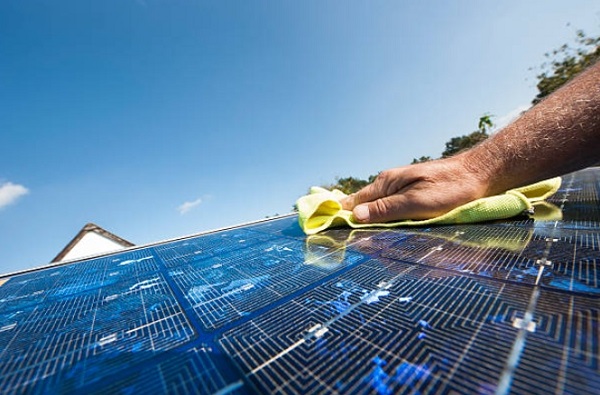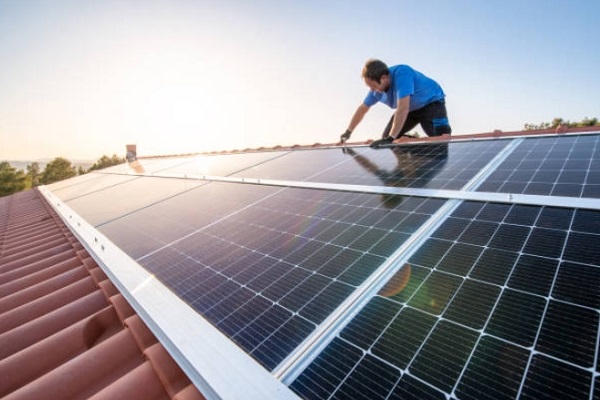Did you know that the average homeowner can see up to a 30% tax reduction by switching to solar energy?
It’s true! New technologies and subsidies are available to homeowners across the country. Switching to solar has never been easier, more affordable, or more beneficial!
Solar energy is changing the way we exist, and we are all the better for it. Below, we’ve compiled some of the best examples of solar energy systems in action.
Learn and take advantage of this opportunity today. Read on!
1. Solar Energy for Residential Use
A well-known example of solar energy is the installation of solar panels in homes. These panels, made from photovoltaic cells, convert sunlight into electricity.
By harnessing the power of the sun, homeowners can generate their own electricity. This reduces their reliance on the traditional power grid. This also lowers their monthly utility bills.
Homes have the option to store excess energy in batteries. This way, homeowners can also have power during cloudy days or at night.
Learn more about how you can enjoy the benefits of harvesting solar energy by checking out this website. Take advantage of the opportunity today!
2. Solar-Powered Water Heating
Solar water heating systems consist of collectors, storage tanks, and plumbing connections. These systems capture solar radiation through solar collectors. These are typically installed on the roof.
Domestic Hot Water
The absorbed solar energy heats a fluid. This is usually a mixture of water and antifreeze running within the collectors. This heated fluid is then circulated through pipes.
This transfers the heat to the water in the storage tank. The stored hot water can be used for various domestic purposes. It is useful for bathing, washing dishes, and laundry.
Homeowners can reduce their reliance on traditional water heaters. This lower energy costs and reduce their carbon footprint.
Commercial and Industrial Applications
These systems are also suitable for larger-scale applications in commercial and industrial settings. Hotels, hospitals, laundries, swimming pools, and other facilities need hot water. They can enjoy a significant amount of hot water using solar energy.
These systems can meet specific hot water demands. This applies to many solar collectors, larger storage tanks, and advanced control systems.
Utilizing solar energy for water heating is great for businesses. This can reduce operating costs. This also shows environmental responsibility and enhances their sustainability credentials.
Solar water heating can have a transformative impact in developing regions. They can have access to clean and reliable hot water.
In many parts of the world, people rely on traditional and often inefficient methods. They burn wood or fossil fuels to heat water. Solar water heating systems can provide a safer, more sustainable alternative.
3. Solar-Powered Outdoor Lighting
Solar energy systems are great for outdoor lighting. This can support garden lights, pathway lights, and street lights.
These lights contain small photovoltaic cells. They absorb sunlight during the day and convert it into electricity. The stored energy is then used to power the lights at night.
Solar-powered outdoor lighting offers an excellent alternative to traditional lighting systems. This eliminates the need for wiring and reduces electricity costs. This system provides illumination in areas without access to the power grid.
4. Solar Energy for Agricultural Needs
Water is crucial for agricultural production. Solar-powered irrigation systems offer an efficient and cost-effective way to pump water. They can get it from wells, rivers, or other water sources to irrigate crops.
Solar-Powered Water Pumps
Solar-powered water pumps eliminate the need for diesel or electric pumps. This reduces operational costs and environmental impact.
Solar-powered irrigation systems are particularly beneficial in remote areas. They have limited access to the power grid. Solar-driven irrigation provides a reliable water supply for crop cultivation.
In addition to crop irrigation, solar energy can provide water for livestock. Solar-powered water pumps circulate water through pipelines to animal watering troughs. These systems cut the need for manual labor to transport water to grazing areas.
This reduces dependence on conventional power sources. It also promotes water efficiency in animal husbandry practices.

Solar-Powered Drying
After harvest, many crops need drying before storage or processing. The traditional process involves using fossil fuel-based dryers. Those can be expensive and toxic to the environment.
Solar-powered crop drying systems offer a sustainable alternative. These systems use solar energy to generate heat for drying agricultural products. This reduces moisture content and prevents spoilage.
Customized solar dryers can accommodate various crops. This includes grains, fruits, vegetables, and herbs. This promotes post-harvest preservation and enhances product quality.
Crop Monitoring Systems
Monitoring and managing crop conditions, water levels, and other environmental factors are crucial. Solar technology can promote efficient farming practices.
Solar-powered remote monitoring systems are useful for deployment in remote or off-grid areas. There are limitations to accessing electricity. These systems generate electricity, powering sensors, cameras, and communication devices.
Farmers can remotely track soil moisture, temperature, humidity, and other parameters. This enables precise decision-making and resource optimization.
5. Solar-Powered Vehicles
There have been innovations in the development of solar-integrated electric vehicle concepts. EV manufacturers integrate solar panels directly into the body of the vehicle.
This concept allows the entire surface area of the EV to capture solar energy. Then, it converts it into electricity for power.
Integrated Solar Cells
Integrated solar cells aim to generate enough energy. This aims to directly power the vehicle’s electric motor. This reduces or eliminates the need for external charging.
These concepts are still in the experimental phase. But they hold the potential to revolutionize the way to power electric vehicles. This provides a greener and more self-sustaining transportation solution.
The energy generated by roof-mounted solar panels may not be enough to power the vehicle. It can contribute to charging the auxiliary battery. It can also support functions like air conditioning, ventilation, and lighting.
This reduces the load on the main battery. Also, it increases overall energy efficiency and extends the vehicle’s range.
Direct Solar Energy
Direct solar energy is possible also for electric bicycles (e-bikes). Solar-assisted e-bikes come with small solar panels integrated into the frame. It can be on other accessories like baskets or panniers.
These solar panels generate electricity. This happens while the bike is in motion or parked under sunlight. The generated energy can charge the e-bike’s battery.
This increases the range of e-bikes. It provides auxiliary power for devices like lights or smartphones.
Solar-assisted e-bikes offer a sustainable mode of transportation. This is true, especially for short commutes or recreational purposes.
6. Solar-Powered Charging Stations
The key advantage of solar-powered charging stations is their ability to operate off-grid. Traditional EV charging stations typically rely on the power grid for electricity supply. This can be a disadvantage in remote or underserved areas.
Solar-powered charging stations can expand in these remote areas. There is no need for extensive electrical infrastructure.
By harnessing solar energy, these stations provide a sustainable and independent charging solution. It expands access to EV charging in rural or off-grid locations.
Solar-powered charging stations offer a greener and more sustainable option for EV charging. The electricity generated from solar panels is clean and renewable. It produces zero greenhouse gas emissions during operation.
By utilizing solar energy, charging stations help reduce reliance on fossil fuels. This contributes to the reduction of carbon emissions associated with transportation.
Solar-powered charging stations play a significant role in promoting sustainable mobility. This supports the transition to a low-carbon transportation system.
7. Solar-Powered Community Initiatives
Solar energy can also be harnessed at a larger scale through community solar projects. These allow many to collectively invest in a solar energy system. The electricity generated by the solar panels is then distributed among the participants.
This provides them with renewable energy without the need for individual installations. Community solar projects promote solar energy accessibility and affordability. It enables more people to enjoy clean and sustainable power.
Shared Solar Gardens
Community solar gardens are also known as solar farms or shared solar projects. These are collective solar installations that enable communities to benefit from solar energy. This is without installing panels on their own properties.
These gardens consist of a large array of solar panels that generate electricity. Community members can subscribe to or invest in the project. They can receive credits or direct benefits from the electricity produced.
Community solar gardens allow individuals to take part in renewable energy generation. They can reduce their carbon footprint and support the transition to clean energy. They may have limited access to suitable rooftops or face financial constraints.
Community Buildings
Community centers, schools, libraries, and other public buildings can benefit from solar energy. Equip these buildings with solar panels. They can generate clean electricity to power their operations.
Solar-powered community buildings also reduce energy costs. This also serves as an educational tool. This demonstrates the benefits of renewable energy to the wider community.
Excess energy generated is useful for the electricity grid if connected. This provides extra revenue for community organizations. It reduces energy bills for the building owners.
Explore Examples of Solar Energy Now
Solar energy is an ever-increasingly popular and efficient option to power your home and lifestyle. With so many examples of solar energy you can take advantage of today, there is no doubt you can find some applications that can work for you.




